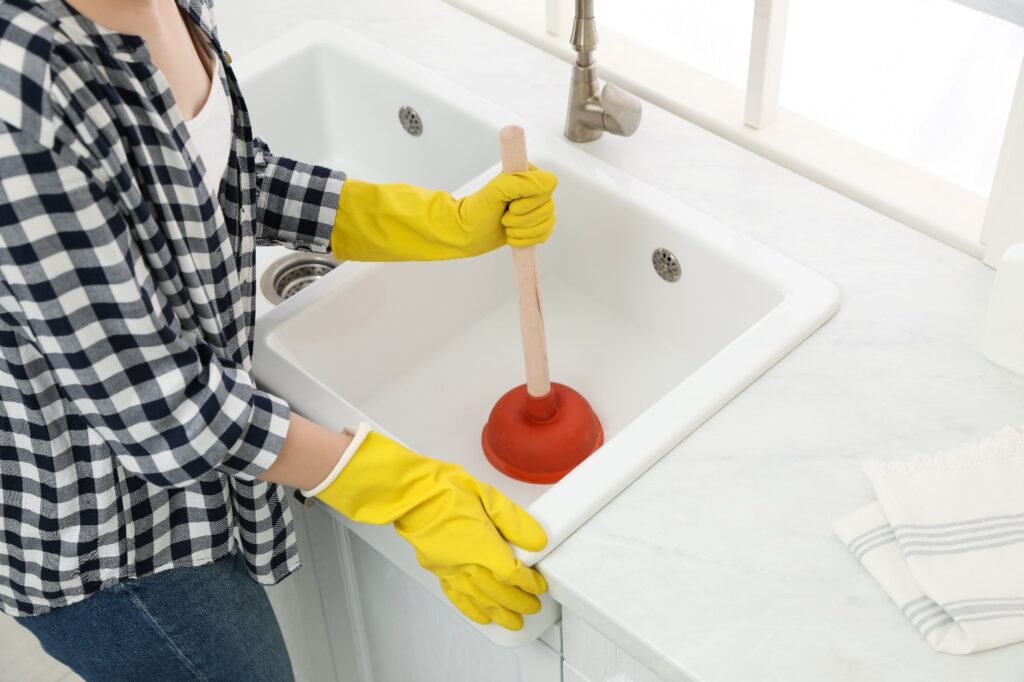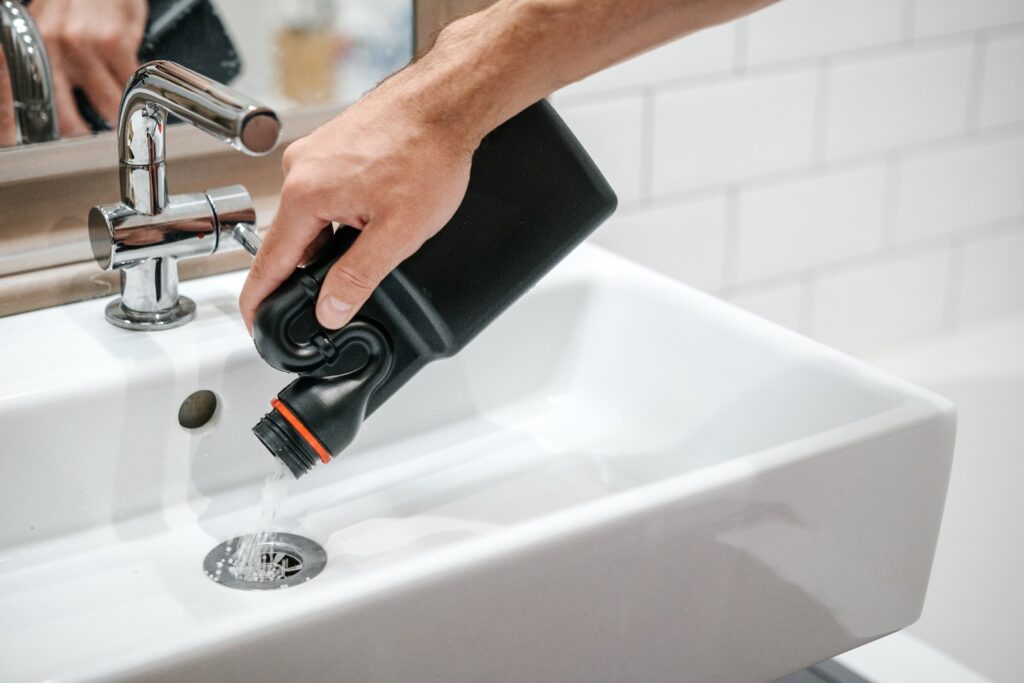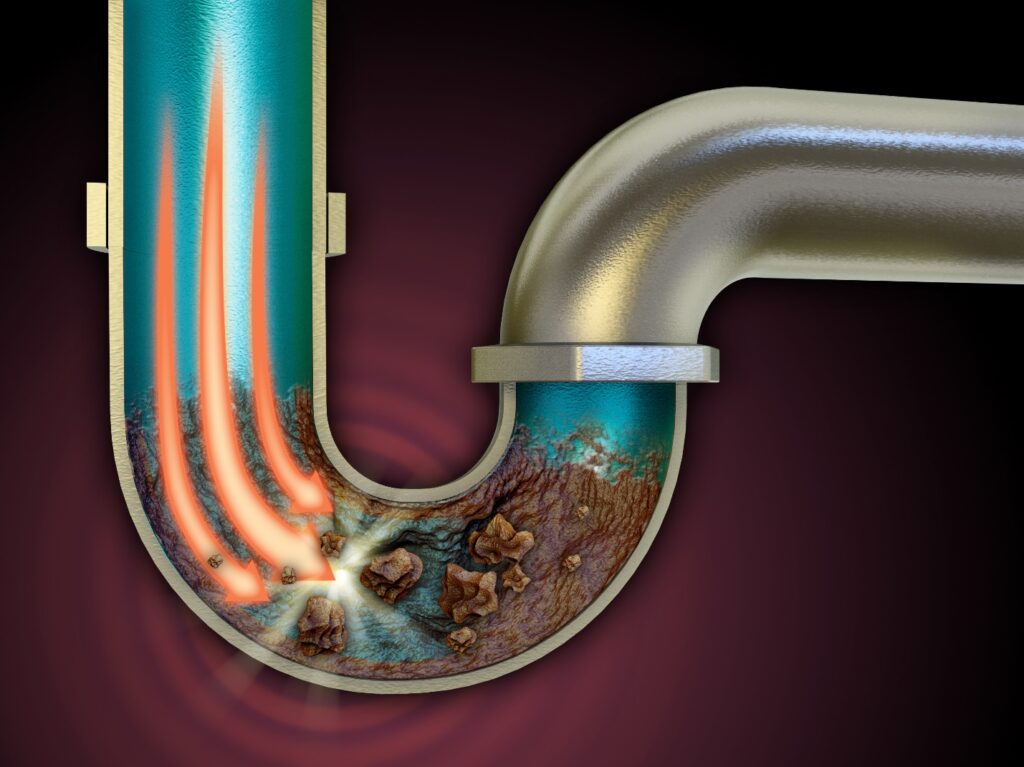Clogged drains are a common nuisance that can seriously disrupt your day-to-day routines. Whether it’s a sink, shower, or bathtub drain, dealing with blockages is an inevitable part of homeownership.
Experiencing drain clogs is more than just inconvenient, however. If you let your clog go – or worse, use the wrong method to clear it – you could end up with unpleasant odors or major plumbing repairs.
Fortunately, some simple tools, a little know-how, and patience can help you tackle the problem yourself, though calling a professional plumber for plumbing service is always an option. Here are 5 simple tips to unclog drains from the experts at M&M Heating, Cooling, Plumbing, and Electrical.
1. Fix Simple Clogs with Boiling Water
One of the simplest and most effective ways to unclog a drain is to start with boiling water. This method can be used for almost any type of drain, whether it’s in your kitchen, bathroom, or utility sink. Boiling water is an easy and eco-friendly way to tackle clogs caused by greasy residues, soap scum, or small blockages.
How to use boiling water to clear a drain:
- Start by bringing a pot of water to a boil. You’ll need enough water to fill the drain and create enough pressure to push through the clog.
- Carefully pour the boiling water directly down the drain in a slow, steady stream. Be careful not to burn yourself with splashing.
- Let the boiling water work its magic for a few minutes. If the boiling water doesn’t clear the clog on the first try, you may need to repeat the process a few times. Fortunately, this won’t damage your drain.
Boiling water is an excellent method for handling minor clogs caused by grease or soap buildup. However, it may not be as effective for more stubborn blockages or those caused by foreign objects, such as toys or jewelry.
2. Grab Your Plunger
A plunger is a classic tool for unclogging drains, particularly clogs that occur in sinks, bathtubs, and toilets. This method helps with organic matter as well, such as hair and food products.
Here’s how to use a plunger to clear a drain:
- For sinks and tubs, add enough water to cover the plunger cup. If you don’t, you won’t get the seal you need to properly dislodge a clog. If you’re unclogging a toilet, there’s no need to add water.
- Place the plunger over the drain opening and ensure a tight seal. Push and pull the plunger forcefully to create suction. The combination of suction and pressure should work to dislodge the clog and help it travel through your pipes.
- If the drain starts to clear, continue plunging until the water flows freely. If it doesn’t work after several tries, you may need to try a different method or call a professional plumber.
The plunger is the go-to tool for many homeowners in the case of a clog. Best of all, it’s an inexpensive method – you probably already have a plunger (or should). That said, it’s important to have the right type of plunger for the job. A cup plunger is good for sinks and tubs, while a flange plunger is designed for toilets because it has an extra piece that can create a strong seal.
3. Use a Snake or Auger for Deep Blockages
For more stubborn clogs or those located deeper in the drain, a plumbing snake or auger can be the best choice. These tools are designed to reach deep into the plumbing system to break apart and remove blockages caused by stubborn clogs or foreign objects.
Here’s how to use a plumbing snake for your clog:
- Carefully insert the snake into the drain until you feel resistance. This likely means you’ve reached the clog.
- Rotate the snake’s handle clockwise while pushing it further into the drain. The snake’s rotating head should help break apart the clog.
- Once the clog has been broken apart, slowly retract the snake from the drain. Be careful not to be too rough, as you can damage the pipes.
- Run water to ensure that the drain is clear. If it isn’t, you may need to repeat the process or call a professional plumber.
Plumbing snakes come in a range of sizes and types, so it’s important to choose the one that’s best for your needs. Also, using a snake incorrectly can damage your plumbing. If you’re unsure of how to use a plumbing snake, it’s better to call in the help of professionals for drain service.
4. Rely on Natural DIY Remedies
If you prefer more natural methods over chemical cleaners, there are DIY remedies that can be effective in unclogged drains. One of the most popular combinations is baking soda and vinegar.
Here’s how to use baking soda and vinegar:
- Start by pouring ½ cup of baking soda down the drain.
- Follow the baking soda with ½ cup of vinegar. The mixture will create a foaming action that can break up clogs and debris.
- Cover the drain with a plug or cloth to contain the fizzing action. Let it sit for about 30 minutes.
- After 30 minutes, remove the cover and flush the drain with hot water.
This method can help break down minor clogs and prevent future ones. Baking soda and vinegar are safe for both your plumbing and environment, so they’re a good choice if you want to be eco-friendly. Keep in mind that this method may not be effective with severe or deep clogs.
A Note About Chemical Drain Cleaners
Chemical drain cleaners are widely available and marketed as the ideal solution for a stubborn clog. They’re purported to break down clogs caused by grease, hair, or soap scum, but they can also damage your pipes. These cleaners have harsh chemicals that can be harmful to your plumbing and the environment, not to mention the potential health risks.
If you want to use a chemical drain cleaner, here’s what you should do:
- Start by reading the manufacturer’s instructions on the product you choose. Different products may have specific usage guidelines.
- Wear protective gear such as gloves and safety goggles when handling chemical drain cleaners. Ensure the area is well-ventilated.
- Slowly and carefully pour the recommended amount of the cleaner down the drain. Be cautious not to spill or splash it on yourself.
- Leave the cleaner to work for the manufacturer’s recommended amount of time. This can range from 15 minutes to several hours. Afterward, flush the drain with water to clear any residue.
Chemical drain clears can help with minor clogs, but that comes at the cost of your plumbing’s condition. If you use chemical drain cleaners, make sure to use them sparingly. The more you rely on a chemical drain cleaner for clogs, the more likely you are to experience pipe damage and health concerns.
If you have an old or delicate plumbing system, you may want to contact a professional before opting for chemical drain cleaners.
Prevent Drain Clogs with Proactive Measures
Knowing how to fix a clogged drain is important, but not nearly as important as preventing them in the first place. Taking a proactive approach helps you not only prevent future clogs but care for your plumbing and avoid expensive emergency service calls.
Here are some tips to prevent drain clogs:
- Keep food, coffee grounds, and grease out of kitchen drains. These items can cause buildup in your pipes that may lead to a clog, or worse, a stubborn clog that wreaks havoc on your plumbing.
- Put leftover food in the trash or compost heap, not the garbage disposal. Your garbage disposal isn’t meant to have just anything flushed inside it. Stick to small food particles from rinsing your dishes and avoid hard or sticky foods like fibrous vegetables or animal fat. Pour liquid grease into a sealable container after cooking.
- Keep hair and soap scum out of bathroom drains. Cover your tub and shower drains with a mesh screen or perforated shower drain hair catcher. Either one will collect the hair and allow the water to flow freely. Some stoppers have built-in screens to make this even easier.
- Brush your hair before showering. This process removes some loose hair and keeps it from clogging the shower drain.
- If you give your dog a bath in the tub or shower, place a washcloth over the drain to avoid a clog.
- Watch what you flush. Toilets are designed to handle human waste and toilet paper, nothing else. Flushing dense, stringy, or bulky materials, even if they’re supposed to be flushable, can cause a clog. Dental floss, feminine hygiene products and other household waste should go in the trash.
- Clean your drains at least once a week. Pull out the pop-up stopper in your bathroom sink, remove any debris in the drain, and rinse the stopper before reinserting it. Remove the drain stopper from your shower or tub drain and use a hair-catching brush to remove hair and other debris.
- Flush your drains weekly with hot water. You can fill your tubs and sinks and then let them drain. For the shower, just run hot water down the shower drain at the end of each shower.
Keep Your Drains Clear
Clogged drains are a common household issue, but you may be able to handle some clogs on your own. Preventing clogs is always easier than correcting them, however, so make good drain habits part of your household routine.
Need a plumbing repair or plumbing service? Call the pros at M&M Heating, Cooling, Plumbing, and Electrical.





















